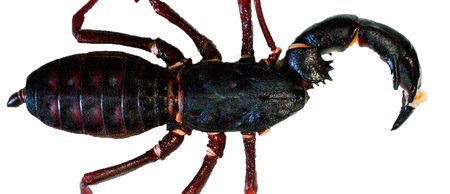The arachnid order Uropygi has never been subjected to phylogenetic research. We perform the first systematic revision and molecular phylogenetic analysis of Uropygi, focusing on the Brazilian genera Thelyphonellus and Mastigoproctus. Our study indicates that Mastigoproctus actually comprises two different genera: the revalidated genus Amauromastigon with a single species, and a new genus Heptatarsus with two species, increasing the number of Brazilian uropygid genera to three. Additionally, we identify ontogenetically variable morphological characters and caution their use in uropygid systematics. (Image credit: Daniel Castro-Pereira.)

Invertebrate Systematics
Volume 39 Number 1 2025
Phylogenetic relationships within Symphrasinae and between mantispoid subfamilies are poorly understood because of the evolutionary influence of raptorial feeding on morphology. The raptorial condition has been interpreted as a synapomorphy of Raptoneuroptera or a homoplasy of Berothidae and Rhachiberothidae. Phylogenetic affinities of Symphrasinae are investigated using 3 genes and 72 newly interpreted morphological characters. We found support for monophyly of Raptoneuroptera, with Rhachiberothidae and Mantispidae as sister groups, and Symphrasinae (Rhachiberothidae) comprising Anchieta as sister to Trichoscelia + Plega.





